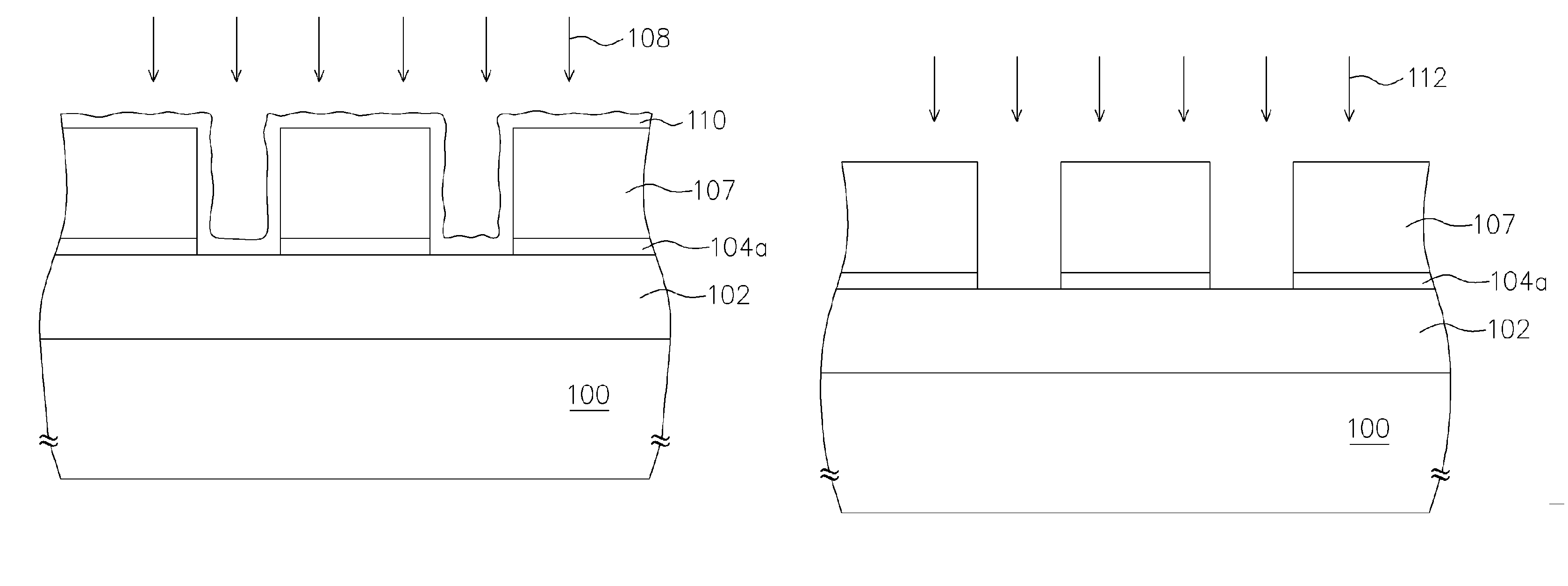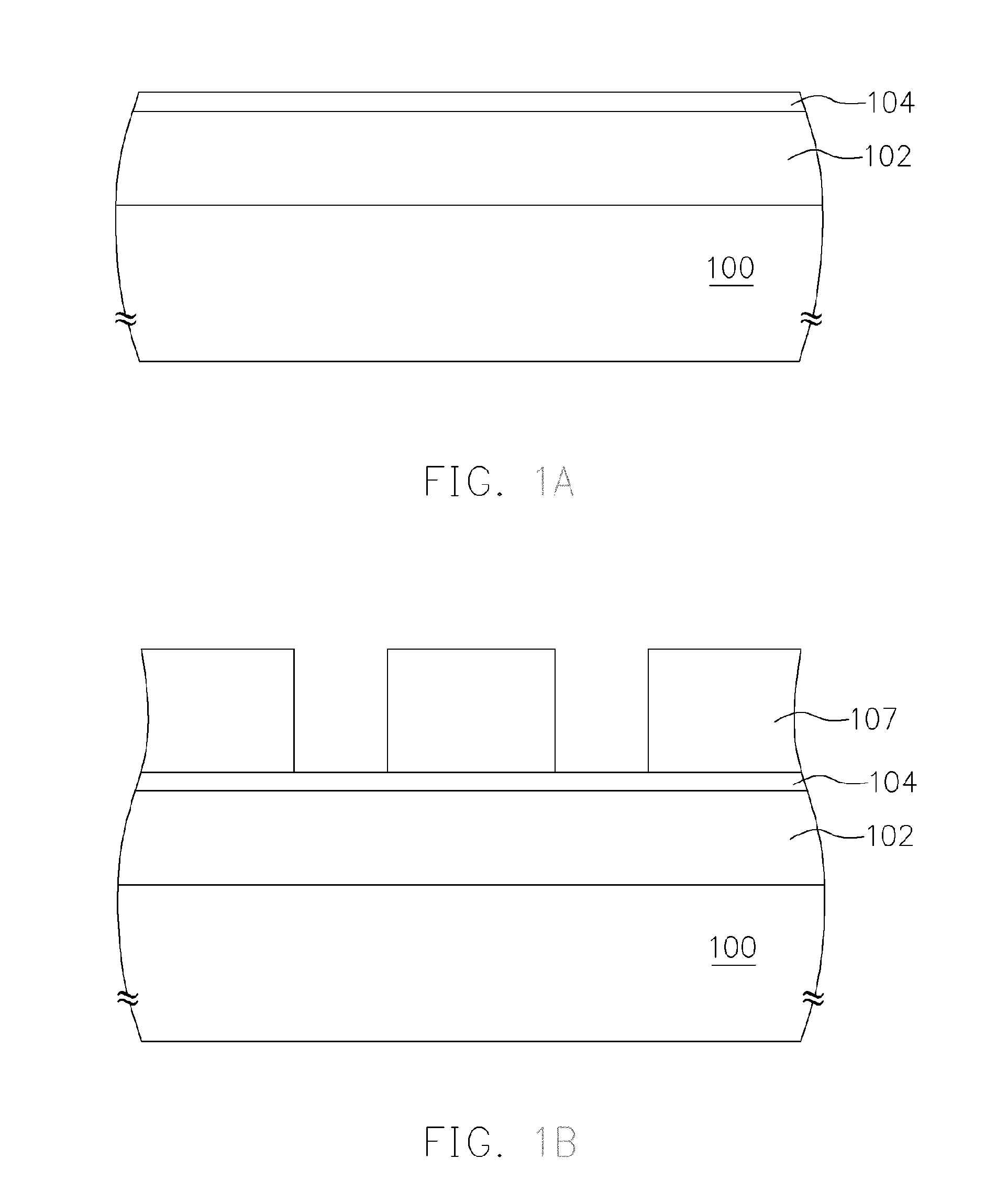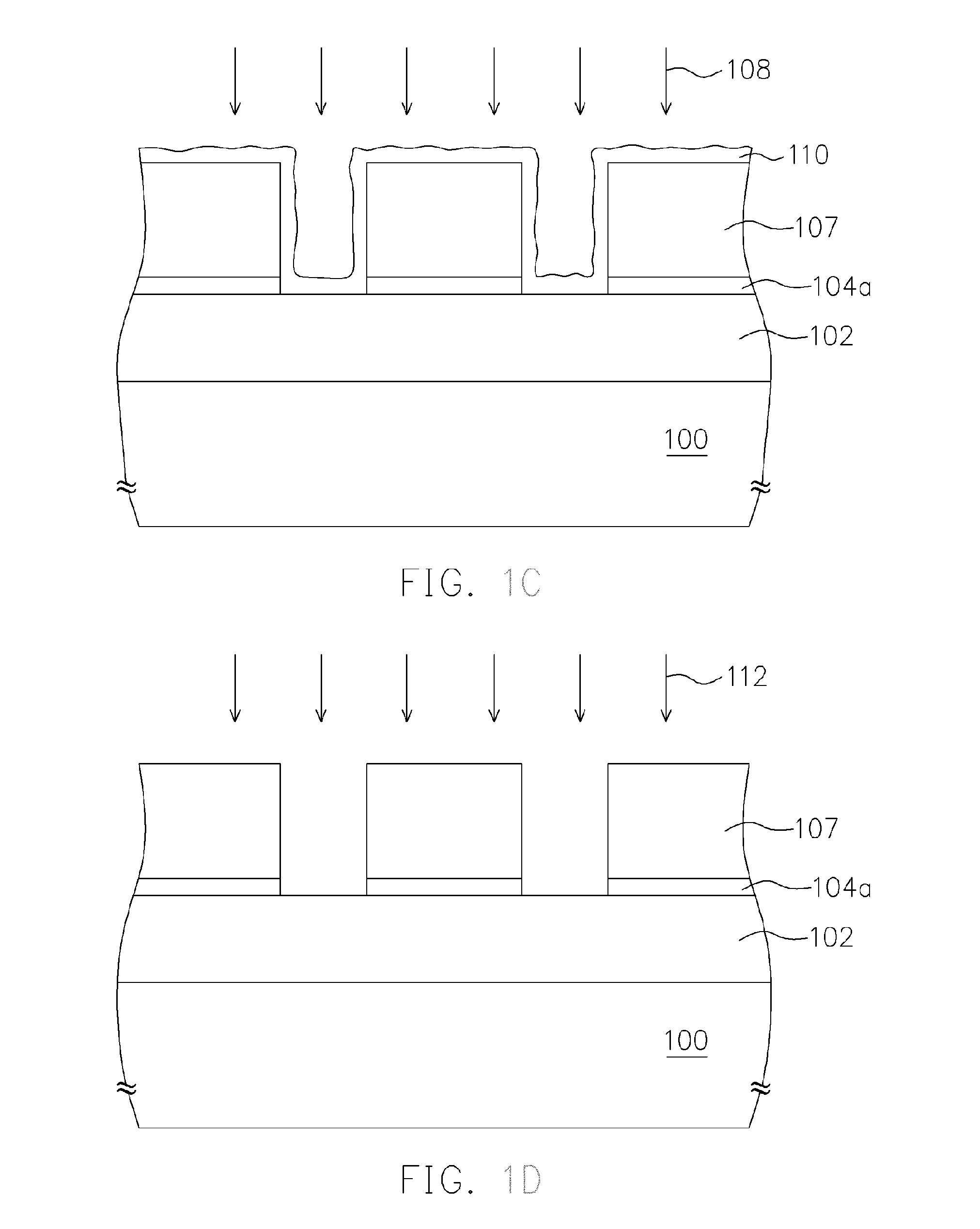Etching process and patterning process
a patterning and etching technology, applied in the field of etching process, can solve the problems of increasing the degree of pattern distortion, difficult control of critical dimensions, and easy distorted photoresist patterns, and achieve the effect of accurate pattern transfer
- Summary
- Abstract
- Description
- Claims
- Application Information
AI Technical Summary
Benefits of technology
Problems solved by technology
Method used
Image
Examples
Embodiment Construction
[0022] Referring to FIG. 1A, a substrate 100 having a material layer 102 to be etched thereon is provided, and a BARC 104 is formed on a material layer 102.
[0023] The material layer 102 may be a polysilicon layer.
[0024] The BARC 104 may include an inorganic material or an organic material. The inorganic material can be formed with chemical vapor deposition (CVD), and may be amorphous carbon, silicon nitride, silicon oxynitride or titanium oxide.
[0025] Referring to FIG. 1B, a patterned photoresist layer 107 is formed on the BARC 104. The method for forming the patterned photoresist layer 107 may include the following steps. A photoresist layer is formed on the BARC 104 with spin-coating and baking, and is then patterned using a lithography method. The material solution for coating the photoresist layer includes a resin, a solvent and a photosensitive agent.
[0026] Referring to FIG. 1C, an etching step 108 is performed to the BARC 104 using the patterned photoresist layer 107 as a ...
PUM
| Property | Measurement | Unit |
|---|---|---|
| organic | aaaaa | aaaaa |
| wavelength | aaaaa | aaaaa |
| reflectivity | aaaaa | aaaaa |
Abstract
Description
Claims
Application Information
 Login to View More
Login to View More - R&D
- Intellectual Property
- Life Sciences
- Materials
- Tech Scout
- Unparalleled Data Quality
- Higher Quality Content
- 60% Fewer Hallucinations
Browse by: Latest US Patents, China's latest patents, Technical Efficacy Thesaurus, Application Domain, Technology Topic, Popular Technical Reports.
© 2025 PatSnap. All rights reserved.Legal|Privacy policy|Modern Slavery Act Transparency Statement|Sitemap|About US| Contact US: help@patsnap.com



